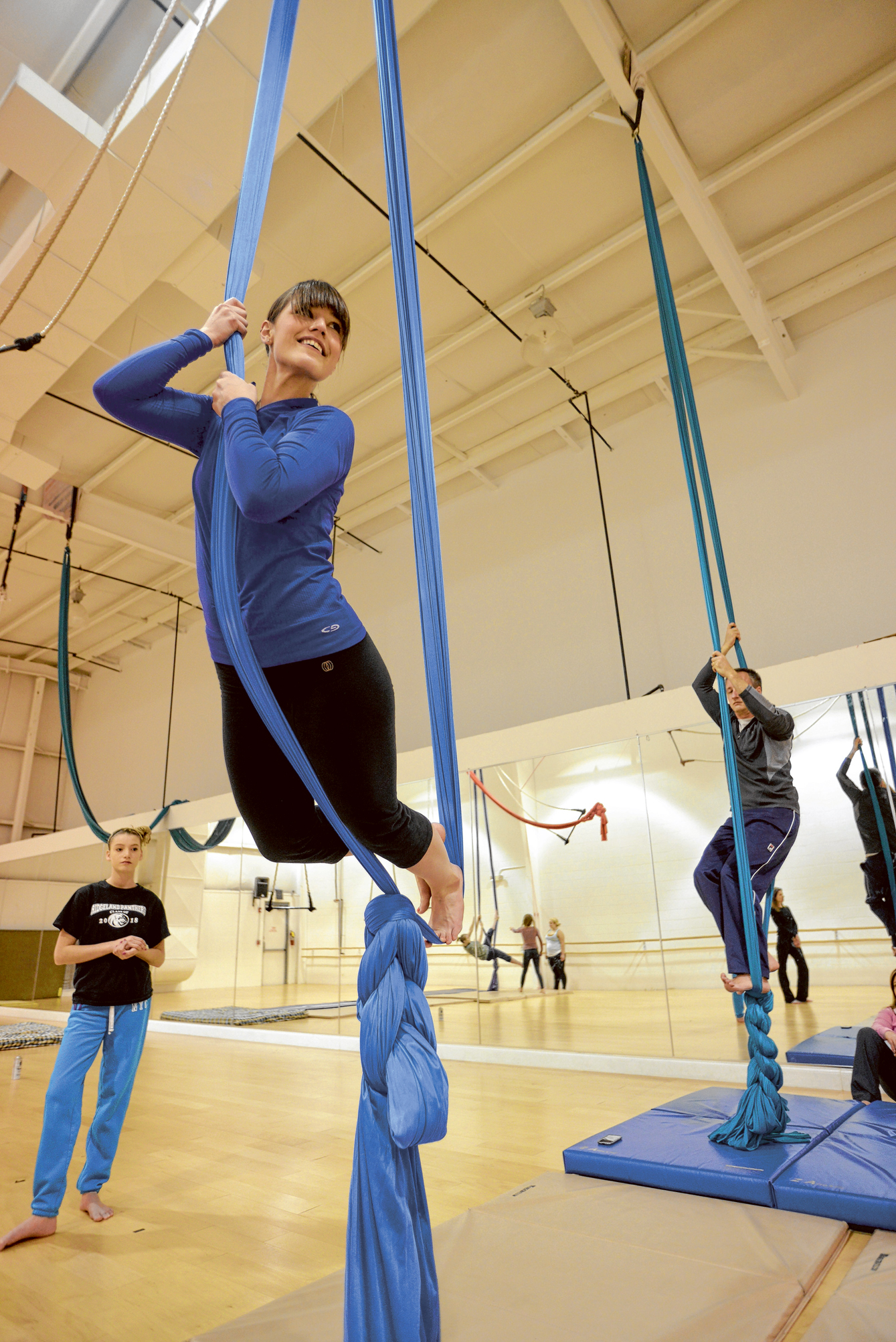Most commonly associated with Cirque du Soleil, aerials are a thing of magic (or so it appears) - made humanly possible with the combination of upper body strength and, most importantly, artistic movement. Although feats like these are usually limited to circus performers, thanks to studios like Chattanooga Aerials in East Brainerd, the art of aerial silks and trapeze performance are now open to anyone willing to put their bodies to the test.
"Every tiny muscle you didn't think you had will be incorporated into aerials," says Jen Keehn, instructor at Chattanooga Aerials. "That's why we love it, we feel like it's the whole package. It's so all encompassing, that just about anybody that is willing to push themselves can do it. We have toddlers and elderly people and all shapes and sizes; it just depends on what you want to get out of it."
Although the sport can seem intimidating, Keehn says that there is nothing to fear but fear itself. "A lot of people are afraid of the height, but all of the equipment can be moved down," she says. "And some people come in thinking you have to be a body builder walking in there. With both of those, it's fear - fear of not being strong enough or fear of being hurt ... fear of looking silly. It's just fun and everyone looks ridiculous together and then polishes it up together."
The important thing, Keehn says, is that it is "aerial dance." Each student is given the opportunity to truly express themselves with movement, like ballet in the air. "It's very interesting because the possibilities of aerial dance are unlimited," she says. "It's a puzzle. You have to figure out how to get from one pose to the next - and make it look really elegant."
The classes are typically taught by demonstration before the students make their own attempts at the poses and try to work them into a sequence at their own pace. The studio offers beginner workshops, private classes and specialized group class options catered to the student's level and what they want to get out of the practice - because although some of their students do, not everyone wants to join the circus.
"Everybody should at least try it. It's just like a playground," says Keehn. "Asking who can do aerial dance is like asking who can come to a playground. Just about anyone can get something out of playing on the equipment."
Eyes Skyward
Fast FactsWhat should I wear?Be sure to wear long pants that are easy to move in and a shirt that covers the armpits and stomach. The ropes and silks used in class can easily cause burn on exposed skin.Who can do aerial dance?Anyone who is willing to try can do aerials, but a basic rule of thumb is if you can hang onto a pull-up bar with two hands and hold yourself there for any amount of time. Even if you can't at first, though, your strength will improve with practice.Is it dangerous?Not necessarily. Although participants do have to sign a waiver upon arrival, the environment is very safe.
I've always been fascinated with circus performers - lion tamers, contortionists and especially acrobats. The closest I've gotten to that is dancing (on the ground) and some gymnastics training, but a little part of me has always secretly wondered what it would be like to hang on a trapeze.
I got my wish with the beginner workshop at Chattanooga Aerials, a class made up of about 10 students with an across-the-board breakdown of ages and body types - everyone from teenagers to middle-aged married couples.
We started class with a waiver, followed by some stretching to break the ice and loosen our muscles before we got our first introductions to the trapeze. Although it would be an understatement to say that the studio seemed intimidating at first, our instructor, Jen Keehn, kept the environment relaxing and fun while demonstrating the poses for us to try. We each took turns stumbling onto the trapeze and trying out the basic sequence of poses we had been taught - things like the standing split, where you have one foot on the bar and you split your legs apart; or the airplane, where you stand on the bar, hold the ropes in your armpit and have the option of going hands-free.
Once we had experienced the trapeze, Jen moved us along to the silks, lengths of stretchy fabric with large knots at the bottom (which are like training wheels for aerial dancers) hanging from the ceiling over cushiony gymnastic pads. We all took turns getting acclimated to the silks before we faced the big challenge of the day - trying to climb the silks without the aid of the knots at the bottom.
The idea is to use your arms, hand over hand, to climb the fabric like a rope, while at the same time wrapping and unwrapping the fabric around one foot, making a sort of brace as you move upward.
Jen made it look so easy, but for me it was like the rope climbing test in middle school gym class - totally impossible. I did give it a try, though, my puny arms shaking the whole time before I went back to the comfort of the knotted silks.
After the two-hour workshop, I felt like a kid again. I had played hard, challenged my body and mind, and completely worn myself out. Am I going to run away and join the circus? I don't think so. Did I fly through the air with the greatest of ease? Definitely not. But did I have a fantastic exhausting, wonderful time? Absolutely.
For more information on Chattanooga Aerials, visit chattanoogaaerials.com.

